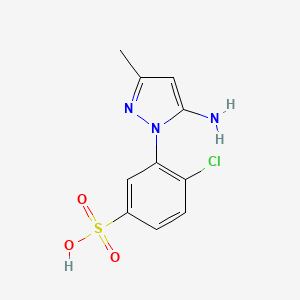|
Name: 4-Methyl-alphapyrrolidinopropiophenone (4-MePPP)
Type: Cathinone derivative
AKA: MePPP, 4-methyl-alpha-pyrrolidinopropiophenone, 1-(4-methylphenyl)-2-(pyrrolidin-1-yl)-propan-1-one)

|
|
II. Natural Derivative
Synthetic substance, no natural derivative
 |
|
III. Chemical Profile (IUPAC name)

|
|
IV. History
4-Methyl-Alphapyrrolidinopropiophenone (4-MEPPP), a synthetic stimulant, was first synthesized in the early 21st century. It is part of a class of compounds researched for their psychoactive effects and has been associated with recreational use and research into new stimulants.

|
|
V. Legal Information
4-Methyl-alpha-pyrrolidinopropiophenone (4-MEPPP) is a stimulant with effects similar to other synthetic cathinones. It is controlled under the Federal Analog Act in the U.S., with international regulation reflecting broader trends in managing stimulant abuse. [Source: UNODC].
US Federal Schedule - I
Schedule I drugs, substances, or chemicals are defined as drugs with no currently accepted medical use and a high potential for abuse. Some examples of Schedule I drugs are: heroin, lysergic acid diethylamide (LSD), marijuana (cannabis), 3,4-methylenedioxymethamphetamine (ecstasy), methaqualone, and peyote.
Key US Federal Policies:
Controlled Substances Act. Public Law: Public Law 91-513 (text can be found on GovInfo) (https://www.dea.gov/drug-information/csa). Date enacted: October 27, 1970.
|
|
VI. Physical Effects
4-Methyl-alpha-pyrrolidinopropiophenone (4-MEPPP) is a stimulant that increases energy, alertness, and euphoria. It causes dilated pupils, elevated heart rate, and increased blood pressure. Short-term effects include enhanced physical and cognitive performance, while long-term use may result in cardiovascular issues and psychological dependence. Overdose risks include severe agitation and cardiovascular problems. Safe dosing is essential, and recent research focuses on its stimulant effects and potential for abuse.  |
|
VII. Psychological Effects
N/A
 |
|
VIII. Culture
4-Methyl-alphapyrrolidinopropiophenone (4-MePPP) is a synthetic stimulant, often associated with the broader category of synthetic cathinones or 'bath salts.' Its cultural significance lies in its emergence in recreational drug scenes and the public health concerns it raises. Media coverage frequently highlights incidents of adverse effects and the challenges of regulating synthetic stimulants. The substance is used recreationally rather than medicinally, contributing to societal debates about the risks of novel psychoactive substances. Proponents might argue for personal freedom and exploration, while opponents emphasize the potential for harm and the need for stricter controls. The substance is typically associated with nightlife and party scenes.
 |
